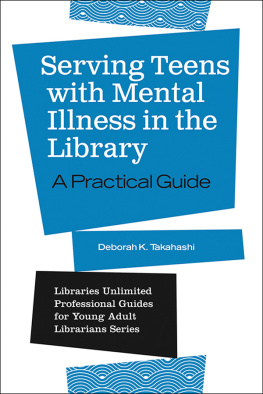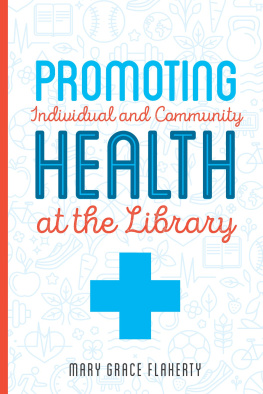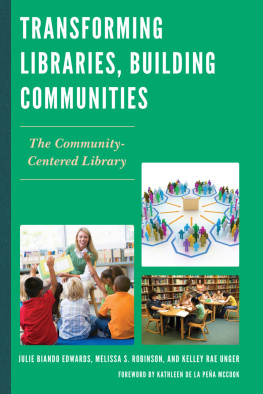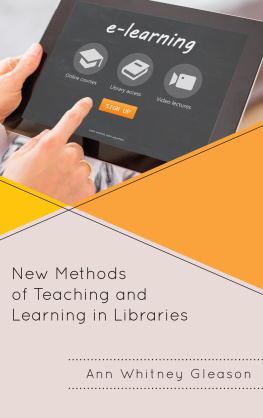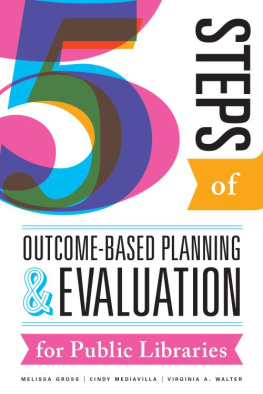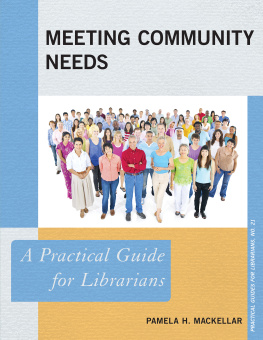Libraries and Homelessness
An Action Guide
Julie Ann Winkelstein

Copyright 2021 by Julie Ann Winkelstein
All rights reserved. No part of this publication may be reproduced, stored in a retrieval system, or transmitted, in any form or by any means, electronic, mechanical, photocopying, recording, or otherwise, except for the inclusion of brief quotations in a review, without prior permission in writing from the publisher.
Library of Congress Cataloging-in-Publication Data
Names: Winkelstein, Julie Ann, author.
Title: Libraries and homelessness : an action guide / Julie Ann Winkelstein.
Description: Santa Barbara, California : Libraries Unlimited, [2021] | Includes bibliographical references and index.
Identifiers: LCCN 2020052576 (print) | LCCN 2020052577 (ebook) | ISBN 9781440862786 (paperback) | ISBN 9781440862793 (ebook)
Subjects: LCSH: Libraries and the homelessUnited States. | Libraries and communityUnited States. | HomelessnessUnited States. | Public services (Libraries)United States. | Homeless personsServices forUnited States.
Classification: LCC Z711.92.H66 W56 2021 (print) | LCC Z711.92.H66 (ebook) | DDC 027.6dc23
LC record available at https://lccn.loc.gov/2020052576
LC ebook record available at https://lccn.loc.gov/2020052577
ISBN:978-1-4408-6278-6 (print)
978-1-4408-6279-3 (ebook)
252423222112345
This book is also available as an eBook.
Libraries Unlimited
An Imprint of ABC-CLIO, LLC
ABC-CLIO, LLC
147 Castilian Drive
Santa Barbara, California 93117
www.abc-clio.com
This book is printed on acid-free paper 
Manufactured in the United States of America
To my husband, David Boyce Danby.
Your support has meant everything.
Contents
Acknowledgments
As I worked on this book, I drew on information and resources from a wide range of sources. Im particularly grateful for the work being done by the National Alliance to End Homelessness (NAEH), the National Low Income Housing Coalition (NLIHC), Point Source Youth, True Colors United, the National Homelessness Law Center, the Homeless Hub, ACEs Connection, the Western Regional Advocacy Project (WRAP), the National LGBTQ Task Force, the Institute for the Study of Societal Issues (ISSI), the Othering and Belonging Institute at the University of California (UC) Berkeley, the UC Berkeley Center for Race & Gender, the National Coalition for the Homeless, the National Center for Homeless Education, Larkin Street Youth Services in San Francisco, the Human Rights Campaign, the National Runaway Safeline, Lavamae x , VoteRiders, TurboVote, abcVote, and all the other organizations that work so hard to address the intersections of homelessness, poverty, and peoples lives. Your conferences, webinars, resources, and publications continue to provide me with relevant information and inspirational support.
Id also like to thank Edwin Cortez, who first introduced me to the idea of looking at homelessness through the lens of libraries. His death was a loss to the profession.
Im grateful to my students in the class Ive been teaching annually for the School of Information Sciences (SIS) at the University of Tennessee, Knoxville. Titled The Role of Libraries in Addressing Homelessness and Poverty, the class has been a pleasure to teach and has provided me with so many opportunities to see the wonderful work being done in libraries by those, like my students, who are committed to addressing social justice issues such as homelessness and poverty. My thanks, too, to the many class guest speakers who have offered their time and knowledge and have contributed to my ongoing commitment to collect relevant information related to this topic. Id also like to acknowledge Diane Kelly, past director of UTK SIS, who provided me with a venue for this particular class.
Thank you, too, to Infopeople, the information and training branch of CALIFA, a California nonprofit library membership consortium, and especially Mary Augugliaro and Lisa Barnhart. Your input and support in creating the continuing education class on homelessness and libraries that I taught for Infopeople was invaluable.
A special thanks to my first editor, Barbara Ittner, who initially reached out to me about writing this book for Libraries Unlimited/ABC-CLIO and who nudged and enthusiastically supported me. Without her initial contact, Im not sure this book would exist.
I also want to acknowledge and thank Jessica Gribble, my current editor, who has been warmly encouraging, patient, and helpful as this book has evolved. And, of course, thank you to ABC-CLIO for providing the opportunity to publish a book about libraries and homelessness.
Thanks, too, to the members of the Whole Person Librarianship (WPL) listserv, whose postings and generosity in answering my questions have made a difference. A particular thank you to Elissa Hardyyour honesty and in-depth knowledge have contributed greatly to my understanding of what libraries can do.
I want to thank members of the International Federation of Library Associations and Institutions (IFLA) section Library Services to People with Special Needs (LSN), in particular, Nancy Bolt, Misako Nomura, and Sanja Buni. Working with you on the IFLA Guidelines for Library Services to People Experiencing Homelessness was a pleasure, and I learned so much from that experience.
My thanks, too, to my friend Vikki Terrile, who is equally engaged in this work, and to my daughters Katie Winkelstein-Duveneck and Rae Winkelstein, whose conversations and editing expertise have informed my work, and to my daughter, Chloe Bullard Gossage, whose sharp eye over the years has helped make me a better academic writer.
To my husband, Davidyour support, thoughts, ideas, and love have made all the difference.
Finally, I want to thank all the people Ive interacted with, through focus groups, interviews, and casual conversations, who continue to offer me insights into the daily challenges of experiencing homelessness. This work is for you.
Introduction
Welcome to Libraries and Homelessness: An Action Guide . Whether you are working in a library, are in library school, or teaching our future librarians, I hope you are able to find relevant, applicable, and useful information that will help you gain a greater understanding of the role of libraries in addressing homelessness.
This book begins with background on homelessness, including relevant terminology, some basic statistics, and an overview of ways in which people can and do experience homelessness, including stigma and stereotypes.
It also addresses the COVID-19 pandemic of 20202021, reflecting on the ways in which that pandemic highlighted the societal inequities and divides that lead to homelessness.
In , the book moves on to look at the history of how libraries have addressed homelessness in the past, current trends, and reasons why this topic is an appropriate one for libraries to be discussing.
Details about the specific needs of those experiencing homelessness and specific actions libraries can take to address these needs are included in . This includes knowing your librarys limits and when to ask for help.
The next section of the book, , focuses on creating an action plan for your library. Since each community and library is unique, you will create this action plan based on an assessment of your library and communityincluding assets, challenges, needs, and funding. This plan will also include making your case to stakeholders, as well as staff members, and addressing any resistance that may occur.
Next page

